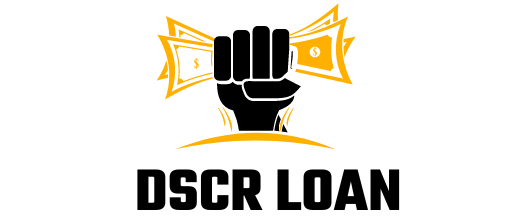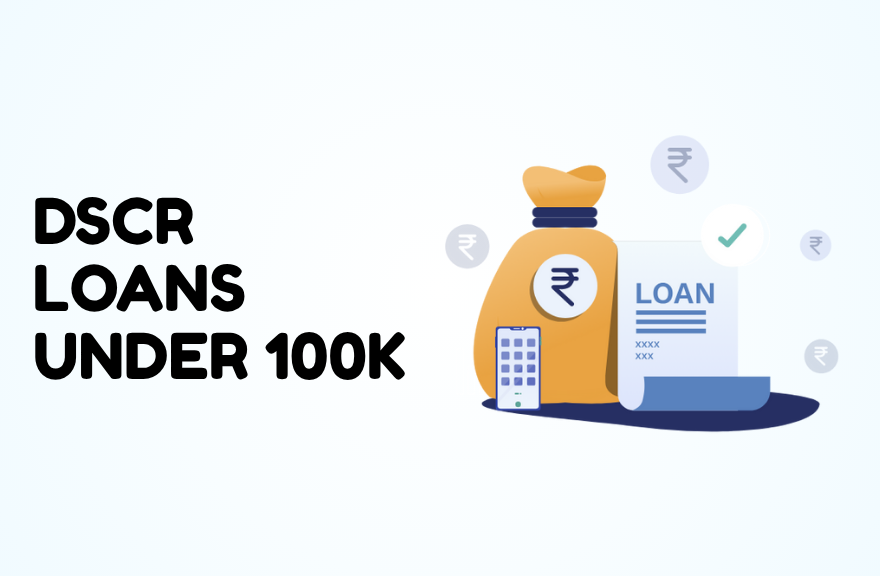In the real estate investment world, small deals can lead to big returns. But finding funding for properties under $100,000 isn’t always easy. That’s where DSCR loans under 100K come into play. These loans, based on the Debt Service Coverage Ratio (DSCR), allow investors to qualify based on rental income rather than personal income. However, low-value deals present unique hurdles because many lenders have minimum loan thresholds, and smaller properties are often considered riskier.
This article breaks down what you need to know about securing a DSCR loan under 100K, how they work, what to expect, and how to make them work for your investment strategy.
What Are DSCR Loans and Why Go Below 100K?
DSCR loans assess a property’s ability to generate income to cover the loan payments. Instead of checking the borrower’s W-2s, tax returns, or pay stubs, lenders look at the property’s monthly income versus debt obligations known as the DSCR ratio.
Why Target Properties Under 100K?
- Lower barrier to entry for new investors
- Higher cash flow potential in certain markets
- Greater ROI in cash-heavy or undervalued areas
- Quicker payback timeline compared to larger loans
But while the opportunities are real, so are the challenges. Most lenders prefer loans above $150K, making it tough to find funding for smaller deals. That’s why understanding your options is critical.
Challenges of DSCR Loans Under 100K
Despite their advantages, these smaller loans come with unique challenges investors must prepare for:
1. Limited Lender Pool
Many traditional and private lenders set minimum loan amounts, usually between 75K to 150K. Smaller loans often aren’t worth their underwriting and processing costs.
2. Higher Interest Rates or Fees
Because smaller loans are riskier or less profitable, you may encounter:
- Higher DSCR requirements (e.g., 1.25x or more)
- Increased origination fees or broker charges
- Less favorable LTV ratios
3. Appraisal and Title Costs Eat into ROI
Fixed costs like appraisals, title insurance, and processing fees don’t scale with loan size, reducing your net return.
Lenders That Offer DSCR Loans Under $100K
Here are a few lenders or platforms known to entertain smaller DSCR deals:
- Kiavi: Flexible terms, competitive for smaller fix-and-flips and rentals
- Lima One Capital: Occasionally funds small deals in stable rental markets
- Private Lenders or Local Hard Money Lenders: Often more open to sub-$100K investments
- Credit unions or community banks: May work with repeat borrowers or investors in their region
Pro tip: Call local lenders directly. Sometimes, unpublished or case-by-case exceptions are possible.
How to Increase Your Chances of Approval
If you’re aiming for a DSCR loan under 100K, use these strategies:
Target Strong Rental Markets
Focus on markets with:
- Low property prices
- High rent-to-price ratios
- Stable tenant demand
Example: A duplex in Cleveland, OH worth 95K that generates 1,200 per month in rent could have a DSCR of 1.3 or higher, making it attractive to many lenders.
Keep Rehab and Vacancy Low
Properties that need major rehab or sit vacant longer reduce cash flow and perceived stability. Choose turn-key or light-rehab homes to minimize delays.
Offer Higher Down Payments
You may need to cover 25 to 30% down to offset lender risk. A lower Loan-to-Value (LTV) ratio boosts approval odds.
Work With a Mortgage Broker
Brokers have access to multiple lenders and can often find niche programs for smaller loans.
Real Example: DSCR Loan Success Under 100K
Investor: Ryan M., first-time investor in Indiana
Property: 2-bed SFR in Fort Wayne ($87,000)
Monthly Rent: $1,100
DSCR: 1.4
Down Payment: 25%
Lender: Small regional credit union
Result: Approved DSCR loan with a 7.5% fixed rate for 30 years
Ryan found the deal on a wholesaling site, did minor repairs, and had it rented in three weeks. His positive cash flow covers his monthly payment with room to spare.
Best Markets for DSCR Loans Under $100K
While high-cost cities like San Francisco and New York are out of reach for sub-$100K deals, many smaller cities and overlooked regions offer excellent opportunities for income-generating properties that meet DSCR loan requirements. These areas typically feature affordable property prices, strong rental demand, and low vacancy rates.
What Makes a Market DSCR-Friendly?
When looking for the best markets for DSCR loans under $100K, prioritize the following:
- Low Median Property Price: Ideally below $120K
- High Rent-to-Value Ratio: Aim for at least 1% monthly rent relative to property price
- Stable Job Market: Growing or diversified local economy
- Low Property Taxes and Insurance Costs
- Investor-Friendly Regulations
Top U.S. Markets to Consider
Here are some promising cities where investors often find properties priced under $100K with strong DSCR potential:
1. Cleveland, Ohio
- Median Home Price: ~$95,000
- Average Rent: $1,000–$1,200
- Known for high rental yields and affordable duplexes
2. Detroit, Michigan
- Median Home Price: ~$80,000
- Popular with out-of-state investors
- Rapid neighborhood revitalization in some areas
3. Birmingham, Alabama
- Strong economic fundamentals
- Affordable properties with stable rental demand
- Low property taxes
4. Buffalo, New York
- Historic properties and working-class rental demand
- Strong local economy and consistent rent prices
- Many homes priced under $100K in older neighborhoods
5. Indianapolis, Indiana
- Large selection of small multifamily homes
- DSCR-friendly thanks to stable rents and low prices
- Investor demand continues to grow
6. Toledo, Ohio
- One of the lowest entry points for real estate investors
- Rents are strong compared to purchase price
- Less competitive than larger metro areas
Tips for Out-of-State Investing
If you’re considering properties in another state, here are a few smart practices:
- Partner with a local property manager
- Do a remote walkthrough or send an inspector
- Understand local landlord-tenant laws
- Use platforms like Roofstock or BiggerPockets to network and find leads
Identifying the right market not only boosts your approval chances for a DSCR loan but also increases your long-term investment success. Lower entry prices mean fewer financing hurdles, and a stronger rent-to-value ratio can improve your DSCR and overall ROI.
Conclusion
While not all lenders offer DSCR loans under 100K, there are paths for savvy investors who know where to look and how to package a strong deal. From small-town rentals to high-yield fix-and-holds, low-value properties can yield solid cash flow if your financing lines up.
If you’re serious about real estate but starting on a tight budget, explore smaller DSCR loan programs. Do your research, work with brokers, and stay flexible. These small deals might be the big break you need.
FAQs
Can I get a DSCR loan under $75K?
Rarely, but yes. Some private lenders or local banks may go that low, especially if you have other assets or strong rent projections.
Do these loans work for short-term rentals (Airbnb)?
Yes, if the lender accepts STR income. You’ll need documented booking history or projected revenue from platforms like AirDNA.
What DSCR ratio is needed for small loans?
Most lenders require at least 1.2 to 1.25, but the higher the better, especially on lower-value properties.
How do I calculate DSCR for my property?
Use this formula:
DSCR = Net Operating Income ÷ Debt Service
If your NOI is $1,000 and your monthly loan payment is $800, your DSCR is 1.25.
What documents are required for DSCR loans?
- Property appraisal
- Lease agreement or rental comps
- Operating expense estimate
- Property insurance details

Introducing Emily Parker, a seasoned professional with over 5 years of expertise in DSCR loans. With her extensive knowledge and experience in the field, Varsha has consistently demonstrated a deep understanding of DSCR loan intricacies and a proven track record of delivering successful outcomes for her clients.

